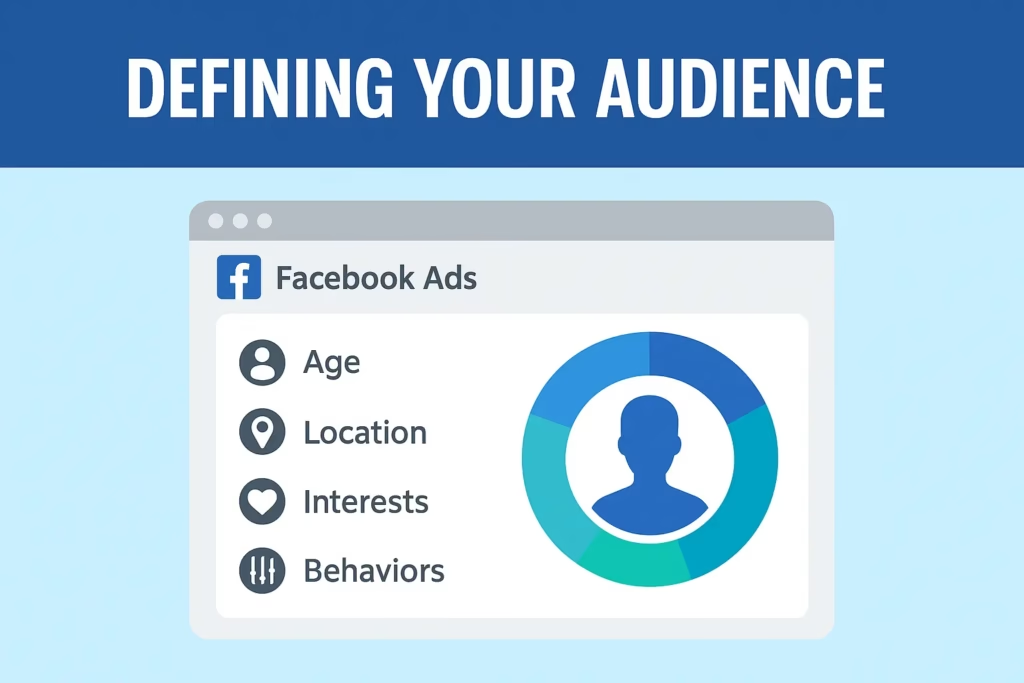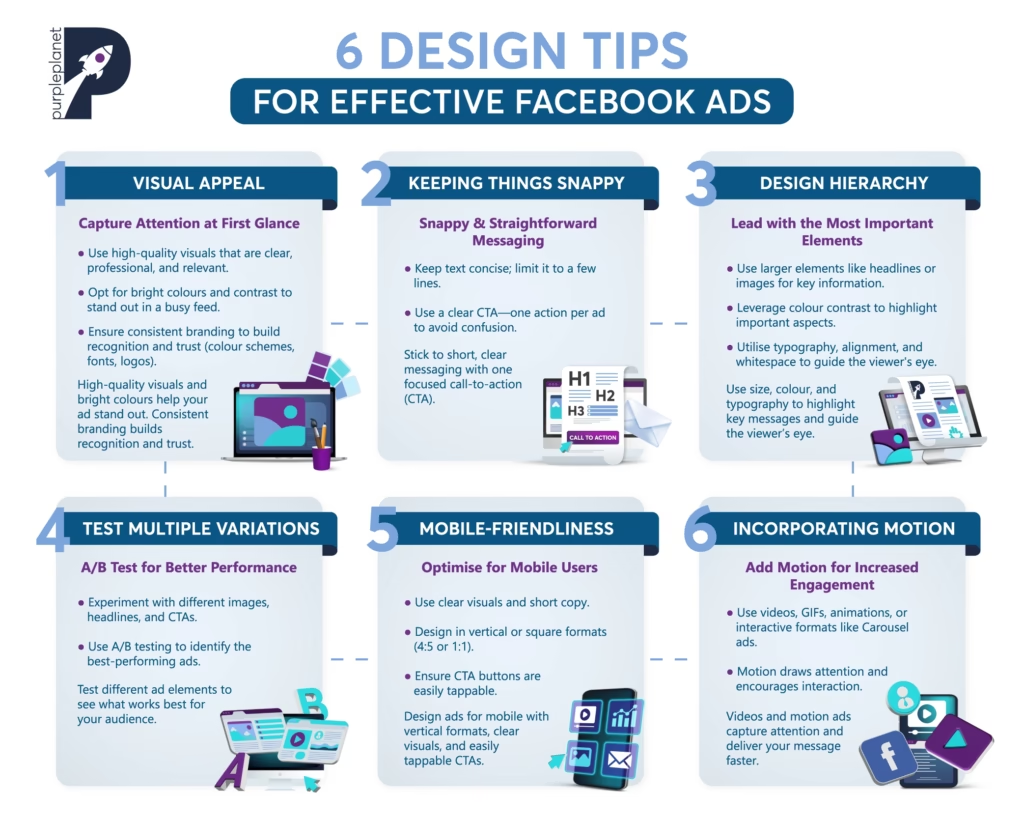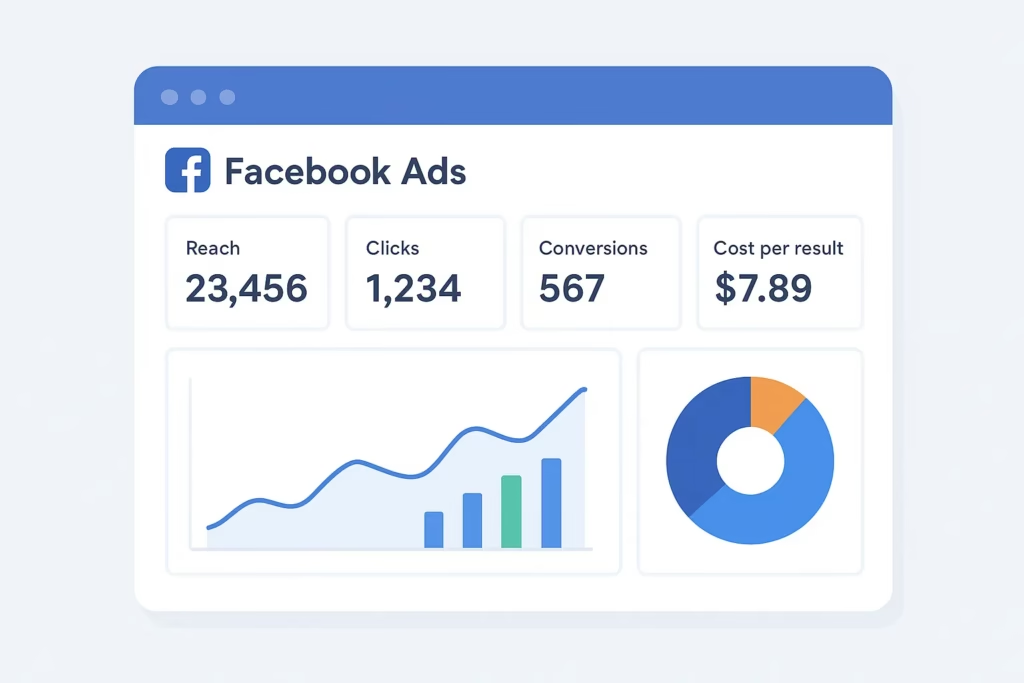How to Run Facebook Ads for Small Businesses: The Ultimate 2025 Growth Guide
Running a small business today is tougher than ever. Customers are online all day, competitors are everywhere, and the old ways of reaching people no longer deliver the same results. This is where Facebook advertising steps in. With over three billion users across Facebook and Instagram combined, it has become one of the most effective platforms to connect with your audience, build awareness, and drive sales. The question that every business owner eventually asks is simple: how to run Facebook ads for small businesses in a way that is cost effective and results driven?
In this guide, we will walk through everything you need to know. You will learn not only the technical steps but also the thinking behind creating ads that actually bring results. Whether you run a café, a clothing store, or an e-commerce shop, the same principles apply. By the end, you will have a clear roadmap on how to run Facebook ads for small businesses without wasting your budget.
Why Facebook ads matter for small businesses
One of the main reasons Facebook ads are so powerful is their ability to reach the right people at the right time. Unlike traditional marketing where you put up a billboard or a newspaper ad hoping the right person will see it, Facebook allows you to target specific demographics, interests, and behaviors. If you run a local bakery, you can show your ad only to people in your neighborhood who are interested in desserts. If you sell online, you can target shoppers who recently visited your website but did not buy. Learning how to run Facebook ads for small businesses effectively means using this precision targeting to your advantage.
For small businesses, this level of precision is a game changer. You can spend just a few dollars per day and still generate meaningful results. This is why understanding how to run Facebook ads for small businesses has become almost a necessity in 2025. Also, if you are trying to decide whether to invest more in Facebook or Instagram, you might find this comparison helpful: Facebook Ads vs Instagram Ads gives you insight into strengths and trade-offs of both platforms.
Setting up the basics
Before you can launch campaigns, you need a solid foundation. The first step is to set up a proper Facebook business page. Many small businesses skip this part or rely on personal profiles, but a business page unlocks tools that are essential for advertising. It gives you access to features like reviews, messaging, and integration with Instagram. Taking these initial steps is part of understanding how to run Facebook ads for small businesses successfully.
Once your page is ready, the next step is to create a Meta Ads Manager account. This platform is the control room for all your campaigns. Here you will define objectives, create ads, set budgets, and track performance. Think of it as your marketing dashboard. Even if you are completely new, Ads Manager is designed to guide you through the process with clear options and step by step instructions. Knowing how to run Facebook ads for small businesses starts with being comfortable inside Ads Manager.
Choosing the right objective
Every campaign starts with a goal. Do you want more people to visit your store, sign up for your newsletter, or purchase from your website? Meta provides different objectives such as brand awareness, traffic, engagement, leads, and sales. Picking the wrong one can waste money because Facebook’s algorithm will optimize based on your choice. For small companies learning how to run Facebook ads for small businesses, selecting the right objective early ensures that the budget is spent on actions that truly matter.
For example, if you select engagement, Facebook will show your ad to people likely to like or comment, not necessarily to buy. If sales are your priority, choose conversions or sales as your objective. Small businesses often benefit from starting with traffic or leads to build momentum before moving toward sales. Mastering how to run Facebook ads for small businesses means aligning your objectives with your stage of growth.
Also, thinking ahead about what the future holds for digital marketing helps. If you are curious about trends and what will shape promotion in the years to come, the article “The Future of Social Media Marketing” here offers some great perspectives: The Future of Social Media Marketing.
Defining your audience

Targeting is the heart of Facebook advertising. Small businesses thrive when they focus on a clearly defined audience rather than trying to reach everyone. You can narrow down by age, gender, location, interests, and behaviors. You can also create custom audiences such as people who visited your website or engaged with your posts. Mastering how to run Facebook ads for small businesses means understanding these audience tools and applying them effectively.
Lookalike audiences are another powerful option. If you already have a list of loyal customers, you can upload it and ask Facebook to find similar people. This way, you expand your reach while still keeping it relevant. Learning how to run Facebook ads for small businesses is not just about spending money; it is about putting your ads in front of the people who matter most.
Setting a realistic budget
One of the most common fears small business owners have is overspending on ads. The good news is you do not need a huge budget to get started. Many successful campaigns run with as little as five to ten dollars per day. According to Meta’s guide on Facebook and Instagram ad pricing, costs depend on your objective, audience competition, and bidding method.
When you set your budget, think in terms of customer lifetime value. If your average sale is worth fifty dollars and you know a customer will likely return multiple times, spending five dollars to acquire one is a great investment. A big part of how to run Facebook ads for small businesses is learning to align your budget with long term value rather than short term costs. Understanding how to run Facebook ads for small businesses requires this mindset shift from viewing ads as an expense to seeing them as a growth engine.
Creating engaging ads

Now comes the creative part. Your ad is the first impression potential customers will have of your business. A good ad usually has three elements: compelling visuals, clear copy, and a strong call to action. This stage is crucial in how to run Facebook ads for small businesses because even the best targeting and budget will fail if the creative does not connect with your audience.
Visuals should grab attention quickly, whether it is a bright photo of your product, a short video, or even a customer testimonial. The copy should be simple and direct, focusing on how your product or service solves a problem. Instead of writing long descriptions, speak to your audience in a conversational way. Finally, always include a call to action such as Shop Now, Learn More, or Call Today.
If your business is considering expanding its marketing beyond just ads say into content creation or inbound marketing—this article about choosing the right content marketing agency will be useful.
Tracking and optimizing performance

Launching an ad is just the beginning. The real magic happens when you analyze the results and make improvements. Inside Ads Manager, you will find metrics like reach, clicks, conversions, and cost per result. These numbers tell you what is working and what is not.
For example, if you see a lot of clicks but very few purchases, your landing page might need work. If people are ignoring your ad altogether, you may need a stronger visual or better targeting. Treat every campaign as a learning opportunity. The more you track and adjust, the better your ads will perform. Knowing how to run Facebook ads for small businesses is an ongoing process of testing, learning, and improving.
Common mistakes small businesses make
It is easy to make mistakes with Facebook ads, especially when you are new. Some of the most common include targeting too broadly, using poor quality images, ignoring mobile users, and failing to track results. Others overspend too quickly without testing or rely on boosting posts instead of creating proper campaigns.
Avoiding these mistakes will save you both time and money. If you ever feel overwhelmed, remember that even experienced marketers go through trial and error. The difference is that they analyze data and make adjustments. That is the real secret behind how to run Facebook ads for small businesses successfully.
Pro tips for 2025
The Facebook advertising landscape keeps evolving. In 2025, video content continues to dominate, especially short form videos like Reels. Small businesses that showcase their products in fun and authentic ways often see the highest engagement. Advantage Plus campaigns, powered by artificial intelligence, are another tool that can help automate optimization.
WhatsApp integration is also becoming more important. Customers now prefer direct conversations with businesses. Running click to WhatsApp ads can generate instant leads for local service providers or retailers. Staying updated with these trends ensures that your knowledge of how to run Facebook ads for small businesses remains relevant and effective.
Conclusion
Running Facebook ads might seem complicated at first, but once you understand the steps, it becomes much more manageable. Start with a clear business page, use Ads Manager to define your objectives, carefully target your audience, and craft engaging ads. Track your results, learn from mistakes, and keep improving.
The most important thing to remember is that Facebook advertising is not just for big brands with huge budgets. Small businesses can and do succeed every day by using these tools wisely. If you have been wondering how to run Facebook ads for small businesses, now you have the blueprint. All that is left is to take action and start growing your business with the power of digital advertising.
How much does it cost to run Facebook ads for small businesses?
Most small businesses can start with a budget of 5 to 10 dollars per day. Costs vary based on competition, audience size, and objectives. The good news is Facebook ads are flexible, so you can increase or decrease spending anytime.
2. How long does it take to see results from Facebook ads?
You may see early engagement like clicks or messages within the first week. However, meaningful results such as leads or sales usually appear after two to three weeks of consistent optimization. Testing and refining ads is key to faster progress.
3. Are Facebook ads better than organic marketing?
Facebook ads deliver faster visibility and reach, while organic marketing builds credibility and trust over time. For small businesses, combining both is the most effective strategy because ads attract immediate attention and organic efforts keep customers engaged long term.
4. What is the best objective for small business Facebook ads?
The best objective depends on your goals. If you want brand awareness, choose reach or engagement. If you need leads, use lead generation. For direct sales, conversions or sales campaigns work best. Aligning the objective with your growth stage ensures better results.
5. Do Facebook ads really work for small businesses?
Yes, they do. Facebook ads allow small businesses to reach a highly targeted audience with a small budget, something traditional marketing cannot match. When paired with good content and regular optimization, ads can increase visibility, generate quality leads, and boost sales.







